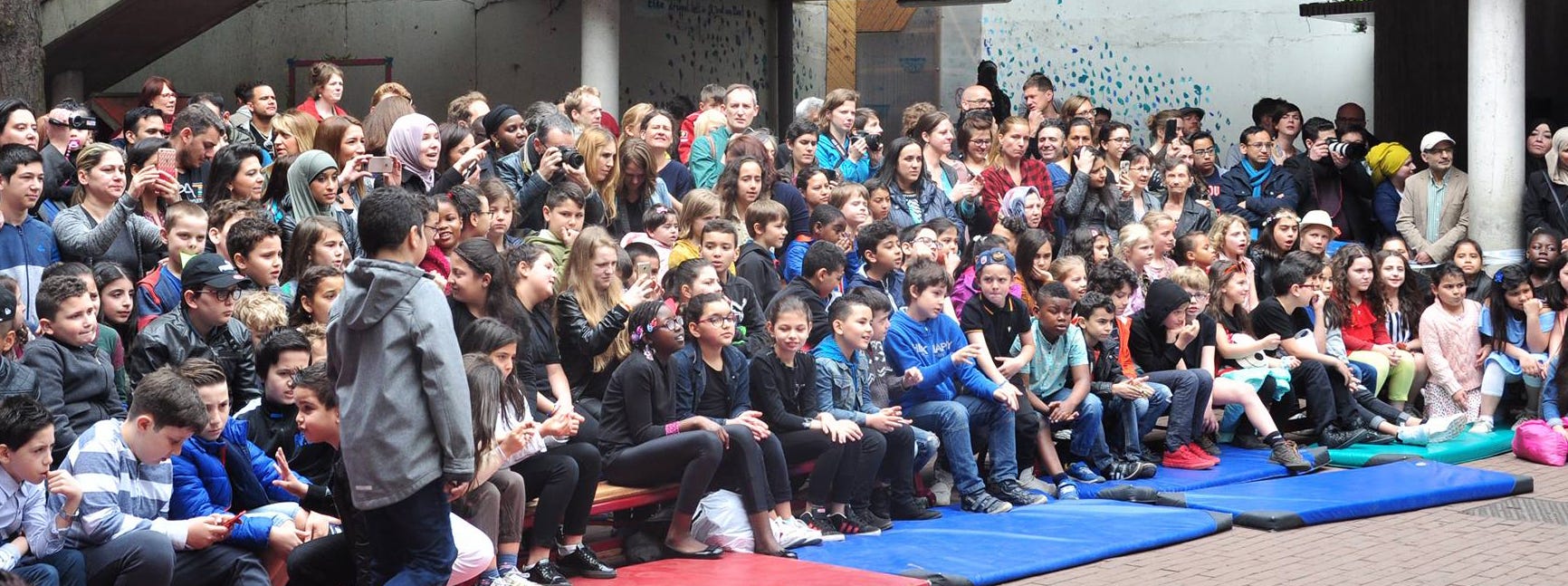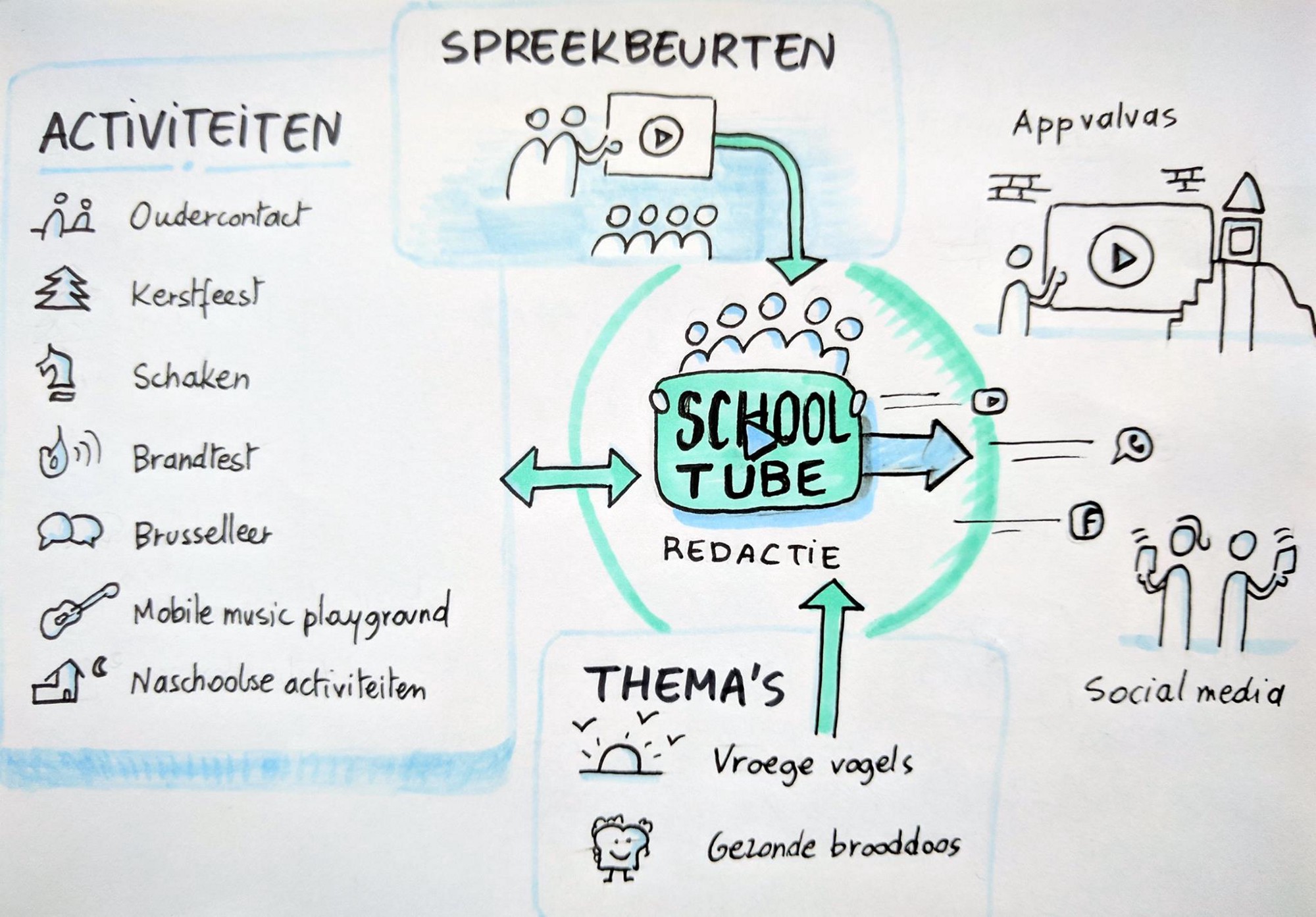Sint-Joost-aan-Zee
Increase parent engagement via video storytelling


Highlights
- Video storytelling with pupils in hyperdiverse school
- Digitizing the school newspaper to reach more parents
Challenge
How can we stimulate families with a migration background to be more interested in school?
At primary school Sint-Joost-aan-Zee in Brussels, we wanted to improve communication with parents, to make sure all children had equal opportunity to participate in the school and school activities. I volunteered for one month in December 2016 to better understand the primary school environment, and I went back in October 2017 to design solutions.
Intervention: video stories about the school

Together with staff and pupils, I explored new ways of sharing the school’s story with parents. Our first solution was video stories. The children learned how to make videos to tell the school’s important stories. We created video lessons (pdf download) and assembled a team of pupil editors. The video stories get shared on a new school blog and on Appvalvas, a screen situated on the playground.
Here’s a video about the project:
After I left, the school continued with the project. The teacher who leads the school newspaper now makes a multimedia newspaper with the pupils. It’s heart-warming to see multimedia stories and videos popping up in the school’s social media channels.
Project background
In schools, there’s often a divide between children whose parents are engaged with school, and ones whose parents seem not to be. Think of activities like close follow up of homework, showing up for parent meetings, subscribing kids for extracurricular activities in school and such. And when parents don’t engage in these activities, the children tend to do worse at school.
Because schools are becoming increasingly diverse, it’s hard for schools to communicate with parents. How, as a teacher, do you reach parents with a migration background and make them feel welcome and at ease? How, as a parent, do you approach teachers that speak a different language and have a different culture? There is a lack of knowledge on the perspective and needs of the parents.
Approach
I interviewed parents and personnel to better understand the problem space. After that, we collaboratively looked for solutions during workshops. We tried different solutions and tested them every time and improved. To structure this learning, I used the service design toolkit approach.
This video gives you a good overview of our process.
Key success factors
School commitment
Teachers and personnel are very busy. It’s hard to get them together for interviews and workshops. Buy-in from personnel and staff is essential. And they need to block ample time in their calendar to help co-design the solution.
Ambassadors
It would be a shame that the project stops when the designer leaves. At Sint-Joost-aan-Zee we were lucky enough to have a few ambassadors for the project. The teacher that leads the school newspaper, for example, was just doing ‘media-month’ in his class. And he was very interested to try new approaches with his pupils and with the school newspaper team. They’re continuing the video storytelling.
Background story
This was the first internship of my service design sabbatical in December 2016. I initially arrived at the school to help them with IT, and hoped to find enough time to discover a problem to work on with the team. We quickly ran out of time and didn’t get much done. Below is the background story of what I learned during a month.
A school is a complex ecosystem. There’s a wealth of people with different skills at functions in the school, and the school itself is at the centre of a network of many different organizations

During the month, I spent a lot of time with kids to create videos about the school. They made a scenario, filmed and interviewed people in the school, and they edited the videos. The group learned a lot, and were very proud to be able to present the videos to the rest of the school.
These tests lead us to further try storytelling by pupils as a means to reach their parents.
Impact
The school continued their digital newspaper and kept making videos.